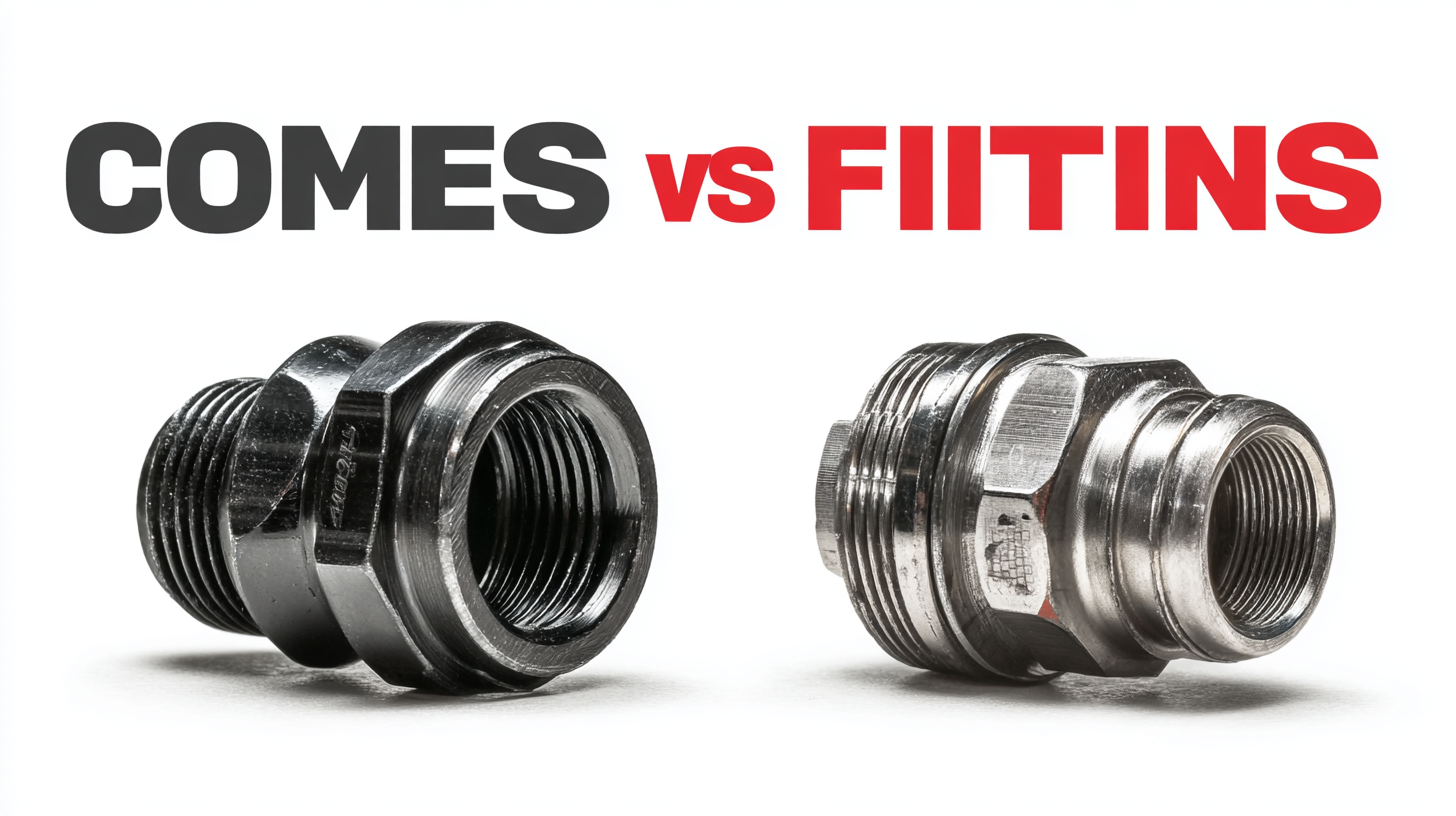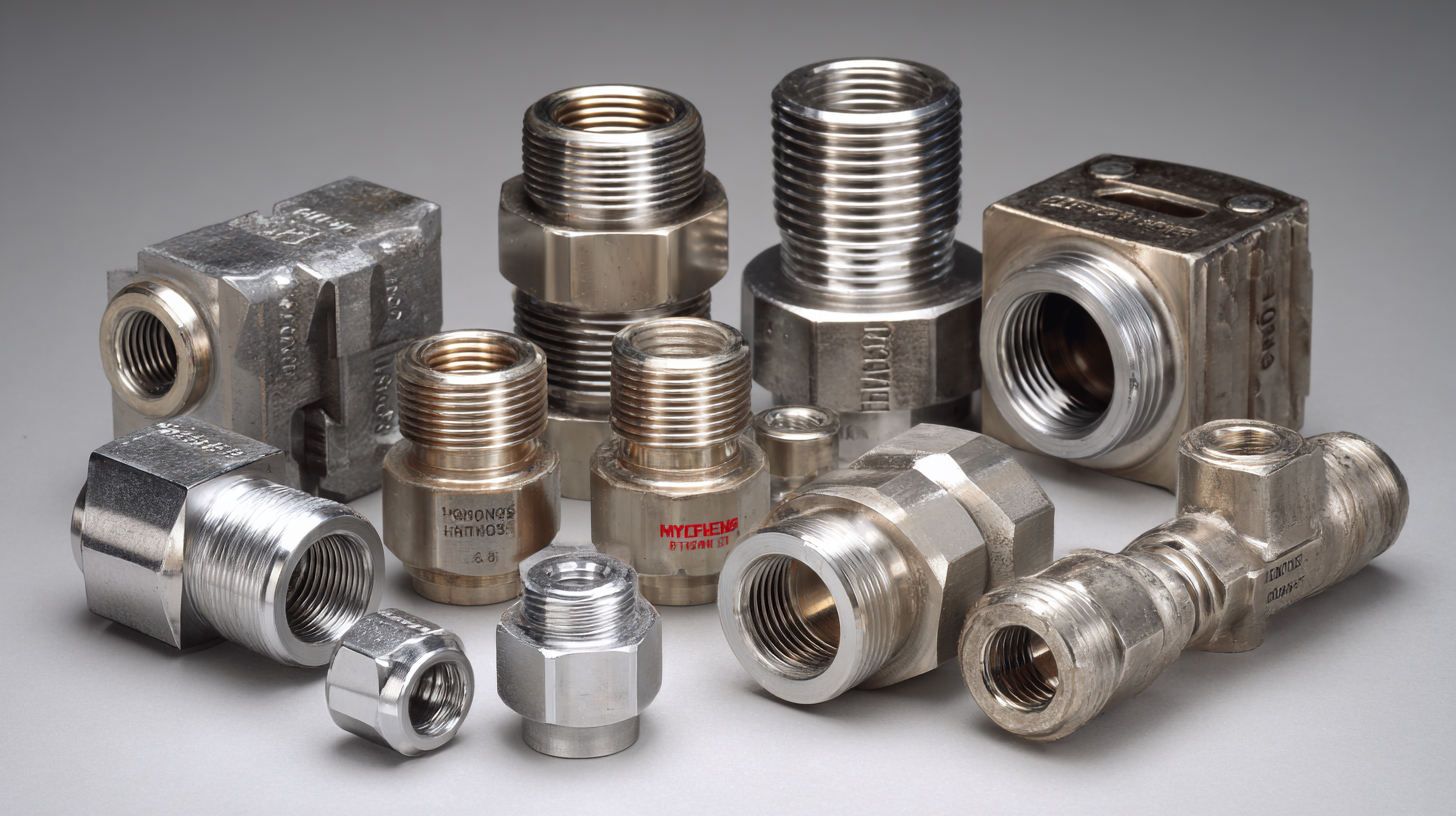A Comprehensive Comparison of the Top Hydraulic Fittings for Global Buyers
In the rapidly evolving landscape of industrial applications, hydraulic fittings play a critical role in ensuring the seamless operation of hydraulic systems.
According to a recent report by MarketsandMarkets, the global hydraulic fittings market is projected to reach USD 8.2 billion by 2026, growing at a CAGR of 5.9% from 2021 to 2026. This surge can be attributed to an increase in demand across various sectors such as mining, construction, and manufacturing, where efficient fluid power management is paramount.
As global buyers navigate through the myriad of hydraulic fittings available, understanding the specifications, material quality, and application compatibility becomes crucial.
This comprehensive comparison aims to elucidate the top hydraulic fittings currently on the market, spotlighting their unique features and advantages, thereby empowering buyers to make informed decisions for their diverse industrial needs.
An Overview of Hydraulic Fittings: Types and Applications
Hydraulic fittings are integral components used in various applications, connecting hoses and tubing to ensure fluid transfer within hydraulic systems. The types of hydraulic fittings are diverse, including adapters, couplings, plugs, and sockets, each designed for specific functions and degrees of pressure tolerance. For instance, swivel fittings allow for flexibility and movement in hydraulic lines, while rigid fittings maintain a static connection that can withstand higher pressures. Understanding the characteristics and applications of these fittings is critical for optimizing system performance and reliability.
The market for hydraulic fittings is anticipated to experience significant growth, driven by increasing demand across multiple sectors including construction, agriculture, and aerospace. According to market research, the global hydraulic fittings market is expected to grow at a rate of 5.4% through 2029, highlighting the importance of upgrading and maintaining hydraulic systems with high-quality components. Additionally, advancements in hydraulic hose technology are emerging, with new products offering enhanced resistance to wear and environmental factors, thereby extending the longevity and efficiency of hydraulic systems.
Key Factors to Consider When Choosing Hydraulic Fittings
When selecting hydraulic fittings, several key factors play a crucial role in ensuring optimal performance and longevity. First and foremost, it is essential to consider the material compatibility of the fittings. Different applications may require materials such as steel, stainless steel, or plastic, each offering distinct advantages in terms of corrosion resistance, pressure tolerance, and weight. Choosing the right material can significantly impact the durability of the entire hydraulic system.
Another critical aspect to evaluate is the fitting size and thread type. Mismatched sizes can lead to leaks and inefficient operation, while inappropriate thread types may not provide a secure connection. It’s important to verify the specifications of both the hydraulic hoses and the fittings to ensure a snug fit. Additionally, understanding the system’s pressure ratings is vital; fittings must be rated for the maximum pressure the system will encounter to prevent catastrophic failures. Ultimately, thorough consideration of these factors will help global buyers make informed decisions when purchasing hydraulic fittings.

Comparative Analysis of Materials Used in Hydraulic Fittings
When selecting hydraulic fittings, the choice of materials plays a crucial role in determining the functionality, durability, and overall performance of the system. Common materials used in hydraulic fittings include steel, brass, and plastic, each with distinct advantages and limitations.
 Steel, often seen as the industry standard, offers high strength and resistance to deformation under pressure, making it ideal for high-pressure applications. Its durability also extends its service life, although it may be prone to corrosion if not properly treated.
Steel, often seen as the industry standard, offers high strength and resistance to deformation under pressure, making it ideal for high-pressure applications. Its durability also extends its service life, although it may be prone to corrosion if not properly treated.
Brass fittings, on the other hand, are renowned for their excellent corrosion resistance and ease of machining. This makes them a preferred choice for plumbing and hydraulic applications where exposure to moisture is common. However, brass fittings can be less suitable for extremely high-pressure scenarios due to their relatively lower tensile strength. Lastly, plastic fittings, typically made from polymers like PVC or nylon, offer lightweight and cost-effective solutions but may not withstand high temperatures or pressures found in more demanding hydraulic systems.
The selection of material must, therefore, reflect the specific requirements of the hydraulic system in question, balancing between performance, cost, and longevity.
Global Market Trends: Sourcing Hydraulic Fittings for International Buyers
As the global market for hydraulic fittings continues to evolve, international buyers need to stay informed of the latest trends and opportunities. Recent data indicates that specific sectors, like the aircraft refueling hose market, are projected to witness significant growth, with an estimated value of USD 2.3 billion in 2023, and a compound annual growth rate (CAGR) of approximately 4.6% from 2024 to 2032. This trend highlights a growing demand for specialized hydraulic fittings as industries invest in upgrading their equipment and processes.
At the same time, events like the 2024 Global Sourcing Fair in Ho Chi Minh City emphasize the importance of international sourcing. With over 20,000 export-ready products displayed, the fair serves as a vital platform for buyers seeking high-quality hydraulic fittings. Buyers can explore a diverse range of products and connect directly with manufacturers, ensuring they have access to cutting-edge technology and the latest industry developments. Such events are crucial for understanding global market dynamics and making informed sourcing decisions that align with current trends.
A Comprehensive Comparison of the Top Hydraulic Fittings for Global Buyers
| Type of Fitting |
Material |
Pressure Rating (psi) |
Temperature Range (°C) |
Compatible Standards |
Common Applications |
| O-Ring Boss |
Steel |
5000 |
-40 to 100 |
SAE J514 |
Construction Equipment |
| Sweat Fitting |
Copper |
3000 |
-10 to 60 |
ASTM B280 |
HVAC Systems |
| JIC Fitting |
Stainless Steel |
6000 |
-50 to 200 |
SAE J514 |
Aircraft and Aerospace |
| NPT Fitting |
Brass |
1500 |
-20 to 80 |
ANSI/ASME |
General Plumbing |
| Metric Fitting |
Aluminum |
2500 |
-30 to 90 |
ISO 8434 |
Mobile Equipment |
Top Brands and Their Unique Offerings in Hydraulic Fittings
When it comes to hydraulic fittings, selecting the right brand can significantly impact system efficiency and longevity. Leading manufacturers, such as Parker Hannifin, Eaton, and Swagelok, have carved a niche in the hydraulic components market, boasting diverse offerings that meet varying industrial needs. According to a market research report by Fortune Business Insights, the global hydraulic fittings market was valued at approximately $2.43 billion in 2022 and is expected to expand at a CAGR of 4.8% from 2023 to 2030. This growth indicates a rising demand for reliable hydraulic solutions in sectors such as construction, agriculture, and manufacturing.
Parker Hannifin stands out with its extensive range of fittings, covering everything from quick couplings to custom solutions designed for high-pressure applications. Eaton, known for its innovation, offers a unique line of lightweight fittings that improve efficiency while reducing weight—crucial for mobile equipment. Meanwhile, Swagelok focuses on high-quality materials and leak-tight connections, promoting safety in critical applications. As global industries seek to enhance their hydraulic systems, understanding the unique offerings from these top brands allows buyers to make informed decisions that align with their operational requirements.